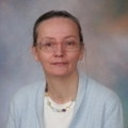Granular cell tumor of the sellar and suprasellar region: clinicopathologic study of 11 cases and literature review.
الكلمات الدالة
نبذة مختصرة
OBJECTIVE
To report a series of cases of surgically resected granular cell tumors in an attempt to better characterize their clinical presentation, imaging features, and treatment outcomes with attention to previously published literature.
METHODS
This is a retrospective study of 11 patients with granular cell tumors. Information obtained from patients' medical records was supplemented by direct physician and patient telephone contact.
RESULTS
The study group consisted of 9 women and 2 men, with a mean +/- SD age of 50 +/- 15 years (range, 26-73 years). Seven patients were symptomatic, 3 of whom presented with visual complaints. Four patients presented primarily with endocrine dysfunction (2) or headaches (2). The duration of symptoms varied from 1 to 12 months (mean +/- SD, 6.0 +/- 4.5 months). Formal visual field testing revealed bitemporal hemianopsia in 6 and a right-sided visual field deficit in 2. The tumor appeared as a well-defined, relatively homogeneously (6) or heterogeneously (1) enhancing suprasellar mass on contrast infusion. Tumor size varied from 1.5 to 6.0 cm (mean +/- SD, 3.1 +/- 1.6 cm). At surgery, the mass was noted to be firm and vascular, and in at least 3 patients these features prevented gross total resection. Only 1 patient who had undergone biopsy of his lesion received adjuvant radiation therapy. Follow-up was obtained in all but 1 patient. Nine of these 10 patients are alive and are either free of disease or have had no disease progression. Follow-up in these 9 patients varied from 1 to 16 years (mean +/- SD, 6.5 +/- 53 years).
CONCLUSIONS
A granular cell tumor is generally a surprise finding in that it is seldom considered in the differential diagnosis of contrast-enhancing, demarcated sellar region masses. Granular cell tumors are benign and slow growing with no pronounced tendency for invasion or recurrence. Because of the indolent growth of granular cell tumors, the surgical goal of tumor decompression is a reasonable therapeutic approach.



